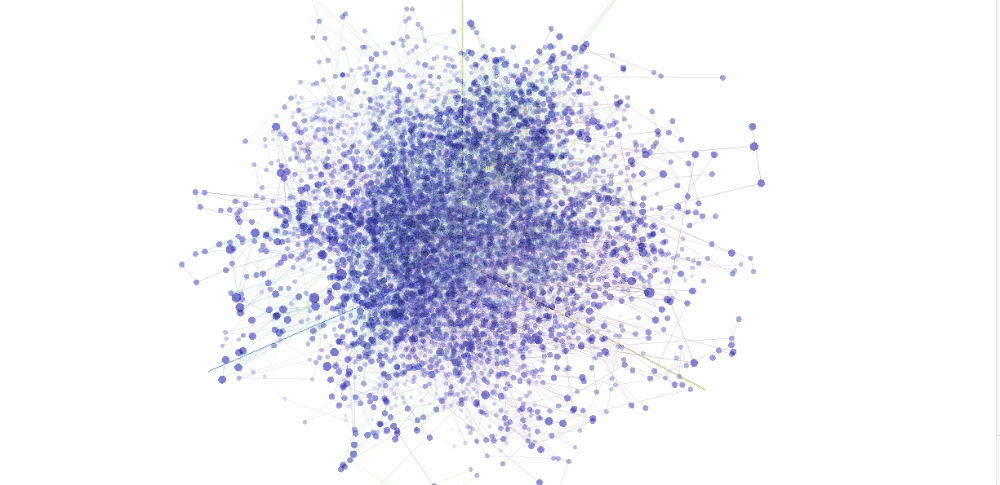APTIVE INSURANCE
Captive insurance companies are insurance companies established with the specific objective of insuring risks emanating from their parent group or groups, but they sometimes also insure risks of the group’s customers. This is an alternative form of risk management that is becoming a more practical and popular means through which companies can protect themselves financially while having more control over how they are insured.
A captive is a special-purpose legal entity that is licensed as an insurance company and is established primarily to insure risks of its parent, affiliated companies, group or association. Captives have long been used as an alternative to conventional insurance for an organization that chooses to self-insure. The most common use of a captive is a single-parent captive, sometimes referred to as a “pure” captive. This type of captive is owned by a single parent (or related group).
Uses of this kind of captive include self-insuring risks under a large deductible (i.e., workers’ compensation, auto, and professional liability), a vehicle to insure risks in a more efficient manner than can be done commercially, and accessing the fronting and reinsurance markets. These captives can also be used to insure risk not covered by conventional insurance policies, such as policy exclusions, the coverage that is unavailable or exceedingly expensive in the conventional market, or other risks that are retained by a business. A captive can also be a profit center for the business by reinsuring risks paid by customers to some other insurer. Types of customer insurance programs that captives have reinsured include extended warranties and tenant liabilities.
The types of sponsoring organizations that set up their own single-parent captive vary widely. Examples include not-for-profits, government entities, Fortune 500 and middle-market-sized businesses, ESOPs, co-ops, insurance agencies, and non-U.S. companies. The kinds of risks insured by single-parent captives span the spectrum of property & casualty risks and can insure medical stop-loss and other employee benefits.
Types of Captives
A range of entity types are available for captive structures, all designed to meet the requirements of a diverse spectrum of clients’ risk management needs.
Single-parent captives
Segregated/protected/incorporated cell companies
Group captives
Agency/producer-owned captives
Employee benefit captives
Rent-a-captives
Risk retention groups

CYBER LIABILITY
Covers losses arising from first and third party risks associated with networks, ecommerce, the internet and other computer or electronic media.

COLLECTION RISK
Covers losses arising from the failure of a debtor to pay a debt after demand, including the failure of a customer or client to pay for goods delivered or services performed, including the costs and expenses incurred in attempting to recover such debts or payment.

DIRECTORS & OFFICERS LIABILITY
Covers claims asserted against the insured and officers and directors of the insured in connection with the performance of a person’s duties as an officer or director of the Insured.

EQUIPMENT BREAKDOWN & BUSINESS INTERRUPTION
Covers damages and expenses incurred as a result of equipment breakdown, including breakdowns caused by power surges, mechanical breakdown, motor burnout, boiler damage and operator error.

FIDUCIARY LIABILITY
Covers claims asserted against an Insured alleging the breach of a fiduciary duty.

GENERAL LIABILITY – DIFFERENCE IN CONDITIONS
Covers losses resulting from occurrences that are normally excluded from coverage under a standard general liability policy.

HOURLY WAGE VIOLATIONS
Covers claims against an insured alleging the violation of any federal, state or local law governing the hourly wages to be paid to an employee.

LOSS OF LICENSE
Covers the cost and expenses incurred by an insured in connection with the suspension or revocation of professional licenses, other business licenses, and/or permits.

POLLUTION / ENVIRONMENTAL HAZARDS
Covers costs and expenses resulting from the contamination of the environment by substances regarded as pollutants.

REGULATORY CHANGE
Covers lost revenues and costs and expenses incurred by an insured as a result of a change in laws and regulations that significantly affect the business of an insured.

REPUTATION RISK
Covers lost revenues and the costs and expenses incurred by an insured caused by the publication by a third-party of a statement or opinion that negatively affects an Insured’s reputation.

SUPPLY CHAIN / TRADE DISRUPTION
Covers lost revenues and costs and expenses incurred by an Insured in connection with the disruption of the Insured’s supply chains from foreign jurisdictions caused by the actions or inactions of a foreign government.

LOSS OF KEY EMPLOYEE
Covers costs to replace a covered key employee, including fees paid to a recruiting firm, hiring or relocation bonus and retention bonuses paid to current key employees to prevent loss.

LOSS OF CONTRACT
Covers lost revenues resulting directly from the loss of a key contractual relationship.

LOSS OF PRIVILEGE
Covers lost revenues resulting directly from the insured’s loss of privilege to work at a healthcare facility.
![]()
ADMINISTRATIVE ACTIONS
Covers losses (including governmental fines) resulting from claims arising from regulatory breaches and violations (e.g., HIPAA, ERISA, COBRA, etc.).
THE BENEFITS OF CAPTIVE INSURANCE
For many years, large corporations in this country have enjoyed many benefits from operating their own captive insurance companies. Most were established to provide coverage where insurance was unavailable or unreasonably priced. These insurance subsidiaries or affiliates were often domiciled offshore, especially in Bermuda or the Cayman Islands. The risk management benefits of these captives were primary, but their tax advantages were also important.
In recent years, smaller, closely held businesses have also learned that the captive insurance entities can provide them significant benefits. These include the attractive risk management elements long appreciated by the larger companies, as well as some attractive tax planning opportunities. A properly structured and managed captive insurance company could provide the following tax and nontax benefits:
- Tax deduction for the parent company for the insurance premium paid to the captive;
- Various other tax savings opportunities, including gift and estate tax savings for the shareholders and income tax savings for both the captive and the parent;
- Opportunity to accumulate wealth in a tax-favored vehicle;
- Distributions to captive owners at favorable income tax rates;
- Asset protection from the claims of business and personal creditors;
- Reduction in the amount of insurance premiums presently paid by the operating company;
- Access to the lower-cost reinsurance market; and
- Insuring risks that would otherwise be uninsurable.
SMALL CAPTIVE INSURANCE COMPANIES THAT ELECT UNDER SEC. 831(b) TO BE “MINI-CAPTIVES” ARE PARTICULARLY TAX-FAVORED. THEIR PREMIUM IS NOT SUBJECT TO TAX; ONLY THEIR INVESTMENT INCOME IS. CAPTIVE INSURANCE COMPANIES CAN ALSO BE USED FOR ESTATE PLANNING. A CAPTIVE CAN BE OWNED BY FAMILY MEMBERS OF THE PARENT CORPORATION’S OWNERS OR A TRUST SET UP FOR THE BENEFIT OF THOSE FAMILY MEMBERS.
IDEAL CANDIDATES FOR CAPTIVES
The use of a captive should be considered for entities that meet the following criteria:
- Profitable business entities seeking substantial annual adjustable tax deductions.
- Businesses with multiple entities or those that can create multiple operating subsidiaries or affiliates.
- Businesses with $500,000 or more in sustainable operating profits.
- Businesses with requisite risk currently uninsured or underinsured.
- Business owner(s) interested in personal wealth accumulation and/or family wealth transfer strategies.
- Businesses where owner(s) are looking for asset protection.
EXECUTIVE SUMMARY
Captive insurance companies are often used by large corporations to lower their insurance costs and are often created in offshore tax havens.
However, small, closely held companies can take advantage of a number of tax and business benefits if they set up their own captives. These captives can be set up in the jurisdiction that makes the most sense for the captive’s business.
Case law and the IRS require captive insurance companies to meet certain requirements.There must be actual risk shifting and risk distribution.
Small captive insurance companies that elect under Sec. 831(b) to be “mini-captives” are particularly tax-favored. Their premium income is not subject to tax; only their investment income is.
Captive insurance companies can also be used for estate planning. A captive can be owned by family members of the parent corporation’s owners or a trust set up for the benefit of those family members. Because there is a business purpose for setting up the captive, the transaction should be respected.
Who should consider forming a captive?
Any company with some of the following attributes should give serious consideration to making a captive part of their risk strategy:
> 30 million or more in U.S. dollars or equivalent gross revenue
> 200,000 or more in U.S. dollars or equivalent annual insurance spend
> 75 or more employees
> Proactive approach to risk management
> Long-term commitment to risk financing
> Strong financial balance sheet
> Appetite to finance retained risk
 14 Feb 2020
14 Feb 2020Perfect Gift for Valentine’s Day
 01 Feb 2020
01 Feb 2020PREM FIN CASE: FOREIGN NATIONAL AGE 53
 05 Jan 2019
05 Jan 2019EVALUATING RISKS | ASSET & COST OF BORROWING
 04 Jan 2019
04 Jan 2019AMERICANS’ GREATEST FINANCIAL FEARS
 02 Jan 2019
02 Jan 2019RETAIN, PROTECT & SAVE
 01 Feb 2017
01 Feb 2017what if you outlive your retirement income?











